As one of the fastest growing metropolises in the United States, Phoenix offers visitors much more than just desert landscapes. World-class resorts, chef-driven cuisine, award-winning museums, vibrant cultural districts, and luxurious spas can all be found across the Valley of the Sun.
| Attraction | Description |
|---|---|
| Desert Botanical Garden | Expansive garden with arid plants and trails. |
| Heard Museum | Museum showcasing Native American culture. |
| Camelback Mountain | Iconic hiking destination with city views. |
| Taliesin West | Frank Lloyd Wright’s architectural marvel. |
| Musical Instrument Museum | Global musical instruments and performances. |
| Hot Air Balloon Ride | Scenic flights over the desert landscape. |
| Japanese Friendship Garden | Tranquil garden reflecting Japanese culture. |
| Chase Field | Major league baseball games and entertainment. |
| Spa Days | Relaxation and wellness at luxury resorts. |
| Old Town Scottsdale | Shopping, dining, and nightlife district. |
| Pueblo Grande Museum | Archaeological site exploring ancient cultures. |
| El Chorro Trail | Hiking trail offering stunning city views. |
From awe-inspiring natural sights to big city attractions, embracing everything Phoenix has to offer takes time. But make sure to pencil in these 12 top things to do to experience the very best of what makes Arizona’s capital so captivating.
Desert Botanical Garden
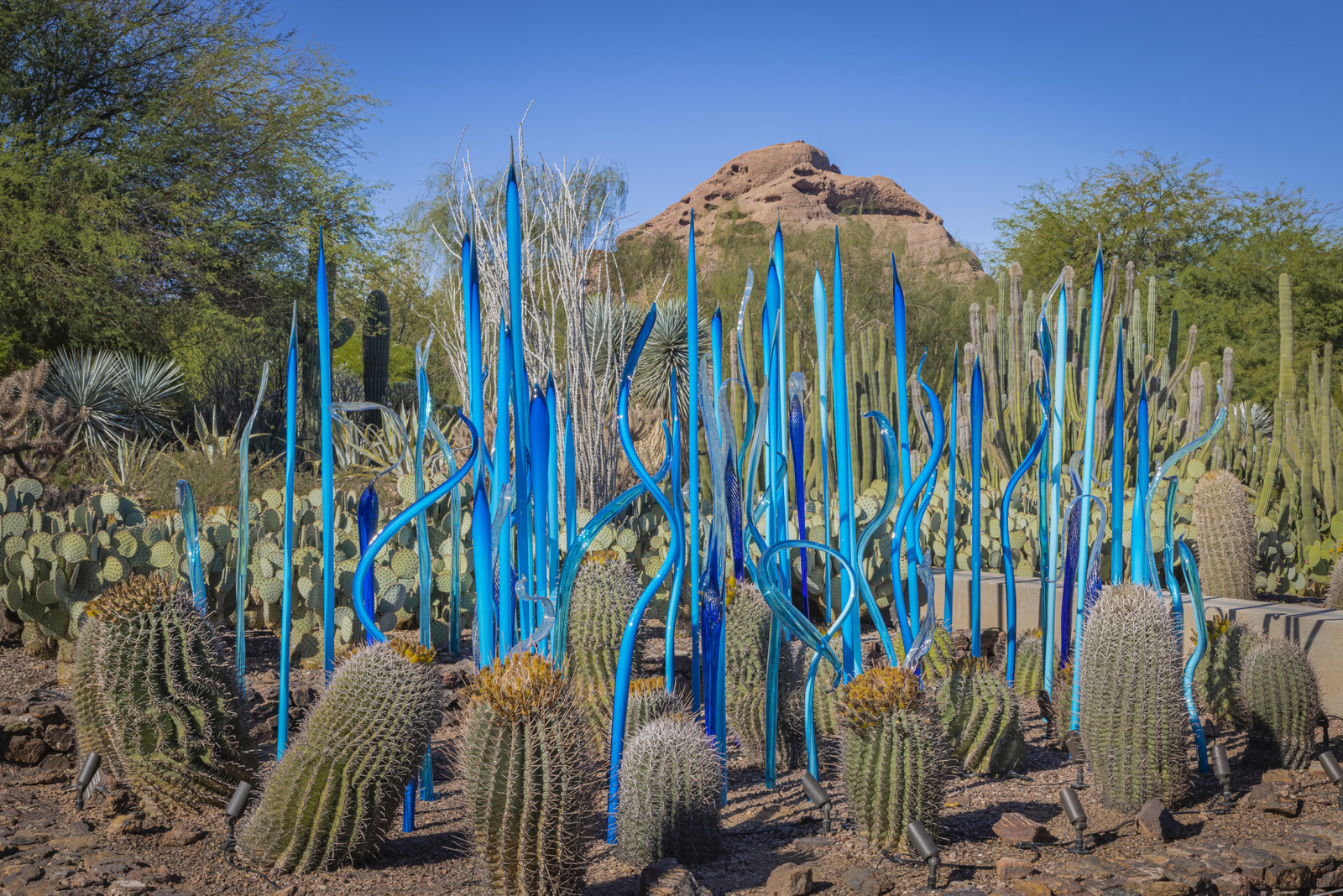
Name and Location: Desert Botanical Garden
History and Significance: Founded in 1939, the Desert Botanical Garden provides visitors with an introduction to the desert plants of the Southwest region. With more than 50,000 plants on display, it is home to one of the world’s finest collections of arid-land plants.
What to Expect: Visitors can meander through five thematic trails to view cacti, wildflowers, trees, and other flora native to desert environments. Seasonal events, classes, and the Butterfly Pavilion offer additional experiences.
Visitor Information: Located in Papago Park. Open daily 8am-8pm; closed Dec 25. Admission fees apply. Tram tours and restaurant on-site. Arrive early to beat daytime heat on trails.
Truly witness the wonder of the desert at the Desert Botanical Garden, home to 50,000 arid land plants spread across 140 acres just minutes from downtown Phoenix. Walking trails snake through huge saguaro cacti, bright wildflower beds, and global cacti displays from across the desert regions of the world. Special exhibitions change seasonally too, focusing on theupdates thrive in the dry yet beautiful desert landscape. Make sure to visit the Garden at night when everything illuminates for enhanced drama beneath the stars. From spring bloom frenzies to fall concerts, the Desert Botanical Garden immerses visitors into Arizona’s exotic flora.
Heard Museum
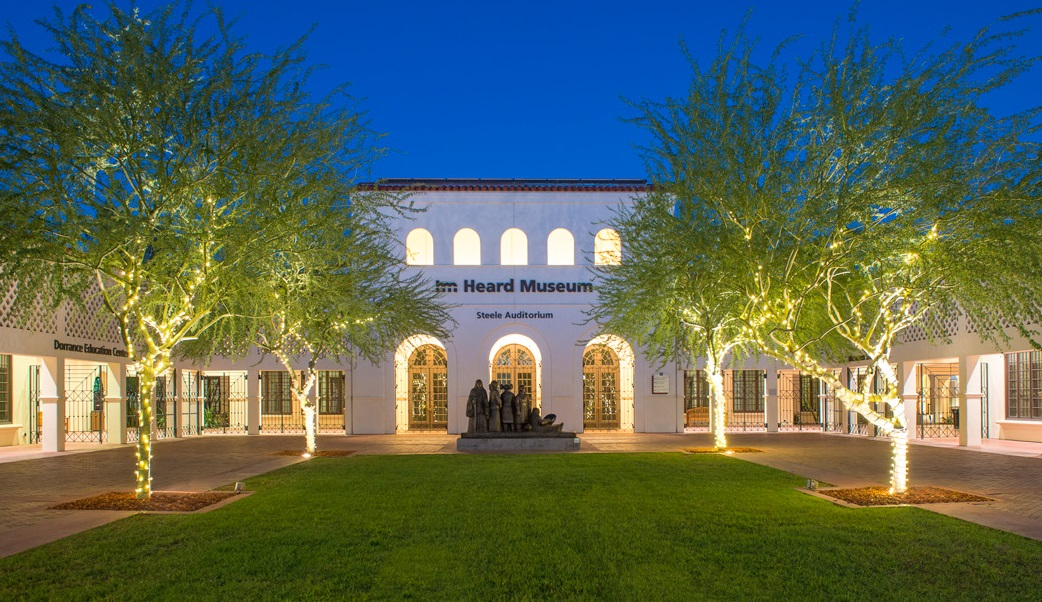
Name and Location: Heard Museum
History and Significance: Dedicated to the sensitive and accurate portrayal of Native arts and cultures, the Heard Museum has grown from a small private collection since opening in 1929 to be recognized globally today. With over 40,000 fine artworks, it advances the understanding of indigenous peoples.
What to Expect: 12 galleries showcase the history, art and lifeways of American Indian tribes from the Southwest to the Arctic through paintings, pottery, jewelry, clothing, dance costumes and cultural artifacts. Multiple special event and lecture series held annually.
Visitor Information: Located in Central Phoenix near the art district. Open M-Sa 9:30AM–5PM plus Sun 11AM–5PM. Ticket prices vary. Onsite food court and gift shops. Guided group tours require advance reservations.
Immerse yourself in the history, culture, art and lives of Native American tribes across the Southwest at downtown Phoenix’s exceptional Heard Museum. Massive kachina doll displays fill the halls alongside intricate Hopi pottery and vibrant embroidery weavings from Arizona tribes. Special exhibit galleries focus on themes like boarding school experiences, Native American rights movements and indigenous resistance histories that illuminate often untold stories. Make time to view the Heard’s outstanding collection of Navajo weavings too – some dating back to the 1800s textured with eco-dyed wool in iconic geometric designs. For visitors hoping to connect with regional native voices past and present, the Heard Museum provides profound perspective.
Camelback Mountain
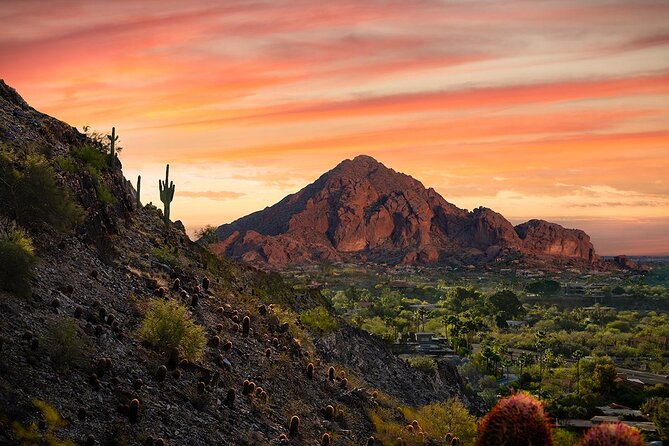
Name and Location: Camelback Mountain
History and Significance: One of Phoenix’s most iconic landmarks, Camelback Mountain offers spectacular views and a heart-pumping workout for locals and visitors determined enough to make the summit. Two trails ascend 1,264 feet leading to the distinguishable Praying Monk formation.
What to Expect: Choose from the challenging Cholla Trail or steeper Echo Canyon route. Both require $6 daily use permits and gain over 1,200 feet elevation in under 2 miles one-way. Pack plenty of water and prepare for crowds on winter weekends.
Visitor Information: 25 min from Phoenix in Paradise Valley. High clearance footwear essential. Dogs prohibited. Park opens and trails accessible daily sunrise to sunset. Arrive early as temps exceed 100°F much of the year.
Named because it resembles a kneeling camel, Camelback Mountain sits right in the heart of Phoenix as one of the city’s most recognizable icons and popular outdoor attractions for hiking. Hundreds tackle the difficult summit hike daily, scrambling over steep and rocky terrain that swiftly gains 1200 feet in elevation along the mile-long Echo Canyon Trail featuring panoramic views, observer warnings to turn back, and chains to assist climbers up slick rocks near the top. While the extreme hike proves challenging, watching the sunrise over the Phoenix valley from Camelback’s summit makes every painstaking step worthwhile. Just prepare properly with hiking boots, lightweight clothing and plenty of water!
Taliesin West

Name and Location: Taliesin West
History and Significance: Taliesin West served as famed architect Frank Lloyd Wright’s personal winter home and architecture school from 1937 until his death in 1959. Still an active school today run by Wright’s descendants, the desert property exemplifies his signature organic style with buildings incorporating natural contours and the landscape.
What to Expect: Guided or self-guided tours showcase Wright’s living quarters, design drafting studio, cabaret theater and exceptional details incorporating stone, wood and glass that connect indoor/outdoor spaces. changing special exhibitions and lecture events also occur onsite.
Visitor Information: NE of Scottsdale via FLW Blvd. Timed tour tickets required for entry. Open daily 9am–4pm excluding major holidays. Photography allowed for personal use. Food trucks visit site midday. Shop sells Frank Lloyd Wright merchandise.
Marvel at Frank Lloyd Wright’s iconic winter home and desert laboratory Taliesin West, the legendary architect’s personal architectural showcase crafted to match the austere beauty of the surrounding Sonoran desert landscape in northeast Scottsdale. Wright and apprentices built by hand much of the structures across the 150 acre property using local rocks and materials between 1938-1959, mirroring surrounding mountains, studying shadows and working closely with the rugged environment. Take an insight tour to hear stories directly from past Wright apprentices about Taliesin West’s innovations incorporating passive cooling and solar heating decades before modern sustainability caught up. Exploring Taliesin West provides far deeper understanding into Arizona architecture.
Musical Instrument Museum (MIM)
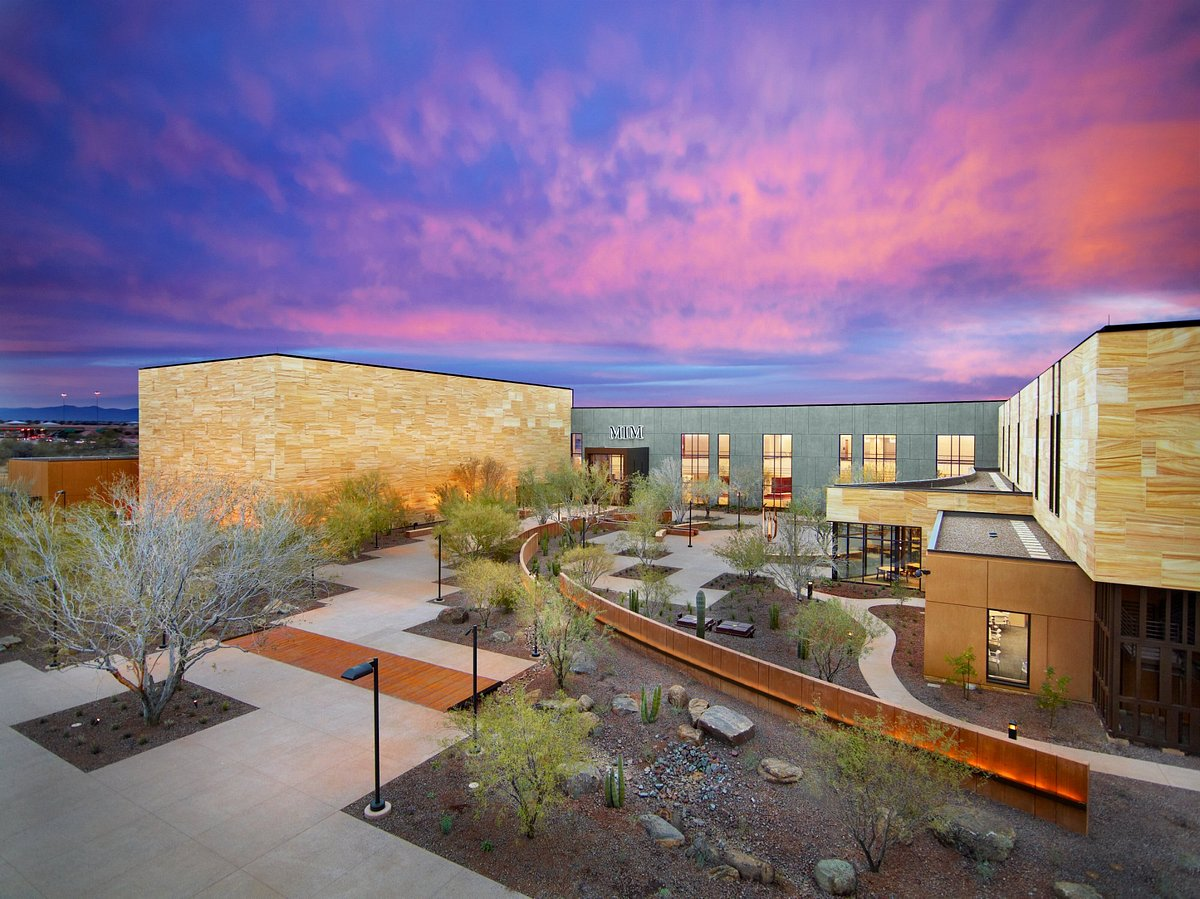
Name and Location: Musical Instrument Museum (MIM)
History and Significance: Open since 2010, the Musical Instrument Museum displays over 15,000 instruments collected from nearly 200 countries to showcase global music traditions. In addition to comprehensive geographic-based galleries, MIM offers interactive technology, hands-on displays and live performances.
What to Expect: Guests receive headset audio guides to hear instruments played in exhibition contexts from recordings in MIM’s library as they explore global galleries dedicated to Africa, Asia & Oceania, Europe and the Americas. Special weekend culture fests.
Visitor Information: Located in North Phoenix; combination museum/concert hall. Open daily 9am–5pm. Ticket prices vary. Onsite restaurants, gift shops. Daily docent-led tours and family guides with puzzles available.
The one-of-a-kind Global Musical Instrument Museum located north of Phoenix showcases over 15,000 musical instruments collected from nearly 200 countries around the world, making it one of the city’s premiere arts and cultural institutions. State-of-the-art wireless audio headsets let visitors key into hearing regional instruments being actively played as you wander through geography-based collections while interactive exhibits explain music traditions across cultures. Be sure to catch a live global music performance too on MIM’s stage hosting artists from six continents year-round. For music lovers and curious minds alike, an afternoon immersed in MIM’s global musical soundscapes always inspires.
Hot Air Balloon Ride

Name and Location: Hot Air Balloon Ride
History and Significance: Hot air ballooning over the Sonoran Desert offers a distinctive way for visitors to admire scenic vistas of saguaro-dotted landscapes from an entirely new perspective floating thousands of feet in the air. The calm, peaceful ride provides incredible photo opportunities and memories.
What to Expect: Passengers gather pre-dawn for safety briefings before the inflation process begins, then climb into the balloon basket for smooth hour-plus flights catching sunrise colors filling the desert sky to the east. Celebratory champagne toasts follow touchdown.
Visitor Information: Book ahead online for best tour selection. Year-round options, very popular Oct–April. Plan 3-4 hour outing. Parking fees may apply for bus transport to launch areas. Not suitable for limited mobility/medical conditions.
Drift almost silently over the spectacular desert landscape outside Phoenix by booking a sunrise hot air balloon flight for an elevated bucket list travel experience catching colourful balloon flotillas floating through the crisp morning air. Balloon pilots launch from various northern Phoenix locations based on ideal wind patterns, aiming to float during optimal sunrise lighting hitting surrounding Sonoran desert mountains awash in golden hues. Standard rides last just over an hour but create lifelong memories gliding around cacti and spiraling upwards through clouds to glimpse incredible views across sweeping plains. Toast an unforgettable voyage capped with brunch complete with champagne and photo package mementos.
Japanese Friendship Garden
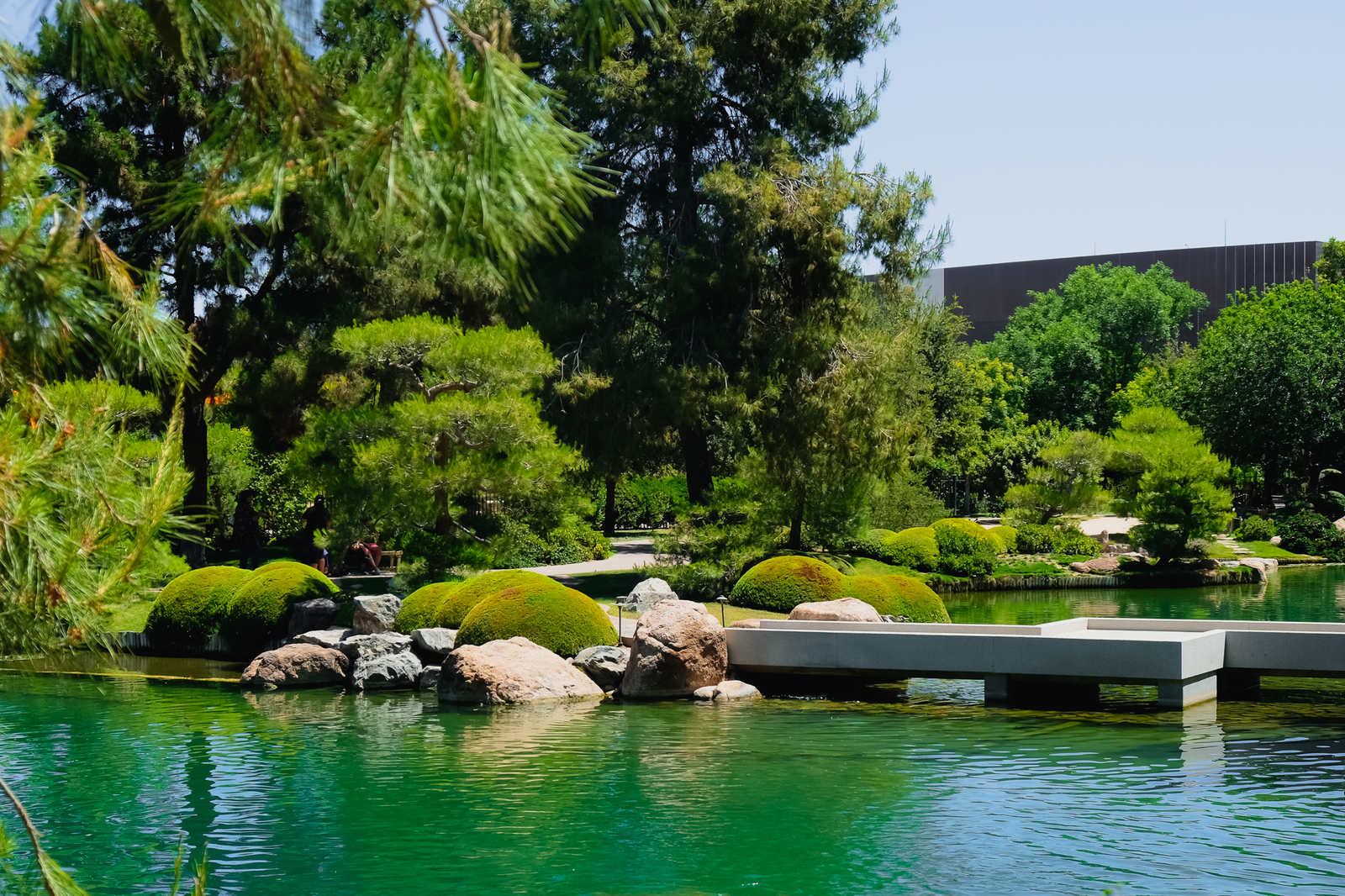
Name and Location: Japanese Friendship Garden
History and Significance: Built on land donated by the city in 1987, the Japanese Friendship Garden provides visitors peaceful surroundings for contemplation and spiritual refreshment. Designed by the Japanese landscape architect Tadashi Kubo, multiple garden spaces follow principles of traditional 15th century style to foster inner harmony.
What to Expect: Strolling landscaped paths reveal water features, stone lanterns, pagodas, Buddha sculptures, aromatic plants and a tea garden. The garden’s designer carefully framed views utilizing water and “borrowed scenery” to reflect nature’s essential elements and accentuate changing seasons.
Visitor Information: Located near downtown Phoenix. Open T-Su 10am–4pm plus Mon 10am-2pm. Admission fees apply. Tea ceremonies require paid reservations. Parking garage onsite.
Built as a gift from Phoenix’s sister city of Himeji, Japan, the stunning Japanese Friendship Garden transports visitors into sublime tranquility just minutes from downtown. Stroll through flowing streams dotted with koi fish, cross arcing bridges, and admire manicured gardens filled with bonsai trees, moss gardens and native Japanese maples for a landscape design masterclass. Have matcha tea poured by kimono-clad women within the traditional tea house. The Phoenix Japanese Friendship garden beautifully reflects the essence of Shinto philosophy promoting meditative harmony between humans and nature amidst the desert backdrop. Time slows to blissful stillness for all who enter.
Chase Field

Name and Location: Chase Field
History and Significance: Home to the MLB’s Arizona Diamondbacks since 1998, the climate-controlled Chase Field holds several league records related to its retractable roof and natural grass field maintained indoors. An icon of downtown Phoenix with its brick exterior, the ballpark integrates local culture and cuisine alongside baseball traditions.
What to Expect: Behind the scenes stadium tours, spring training games, family focused attractions like a mini field and carousel. A Friday night fireworks show complements games. Fare from Sonoran dogs to fancy hot dogs available from food vendors. Gift shop stocks team/stadium souvenirs.
Visitor Information: Tickets and parking passes should be secured in advance online/box office for games and tours. Summer temps can exceed 110°F requiring hydration and sun precautions. Guest Event Services staff available for accessibility and other special needs.
Baseball fans find requisite church amidst the outfield concourse at Chase Field, home stadium downtown for the Arizona Diamondbacks with approximately 49,000 square feet of games and rides. Purchase the $35 Big League Package for endless entertainment and all-you-can-eat hot dogs, popcorn, nachos and soda from an hour before first pitch through the 7th inning stretch then grab seats to watch the D-backs in air conditioned comfort. When the team hits home runs, the signature bobbing hot tub mechanically lifts models out of the water amidst post-apocalyptic sound effects. Just don’t miss the Diamondbacks famous mid-game pool break, where players leap fully clothed into a swimming pool overlooking the field after select Sunday wins. Baseball unites Phoenix across culture and Chase Field offers epic entertainment for all ages beyond what happens on the diamond.
Spa Days

Name and Location: Spa Days
History and Significance: Greater Phoenix offers visitors ample opportunities for indulgent spa treatments and stress-reducing therapies to rejuvenate from vacation activities or business travel. Area resorts focus on balancing mind/body wellness – from soothing massage to healing desert botanicals. Ville de Maries and Joya Spas repeatedly earn top honors nationally.
What to Expect: Signature treatments utilize desert ingredients like prickly pear, jojoba and aloe vera. Choose from massage styles like hot stone therapy, reflexology or deep tissue; facials ideal for every skin type; body wraps/scrubs; salon services; boutique pools, etc. Expect polished yet relaxed environments conducive to treasured “me time.”
Visitor Information: Call to inquire about day packages for non-resort/hotel guests. Fees & gratuities apply. Advance reservations required (4 weeks ahead for weekends). Minimum age restrictions for some locations. Plan transportation; arrange childcare.
With countless world class luxury spas and wellness resorts scattered across the Valley of the Sun, visitors absolutely need to pencil in serious R&R poolside or inside acclaimed properties like Sanctuary on Camelback Mountain or the Arizona Biltmore Resort. Booking his and hers signature massages, customized facials and detoxifying body scrubs easily eats up hours and tension. Some spas incorporate indigenous techniques like restorative blue corn exfoliations harnessing the southwest landscape. Just floating lazily down a mineral pool after intense bodywork therapies or unwinding senses inside aromatherapy steam rooms caresses mind, body and soul back towards blissful balance. Phoenix spa days equal必要 essential self-care rituals.
Old Town Scottsdale
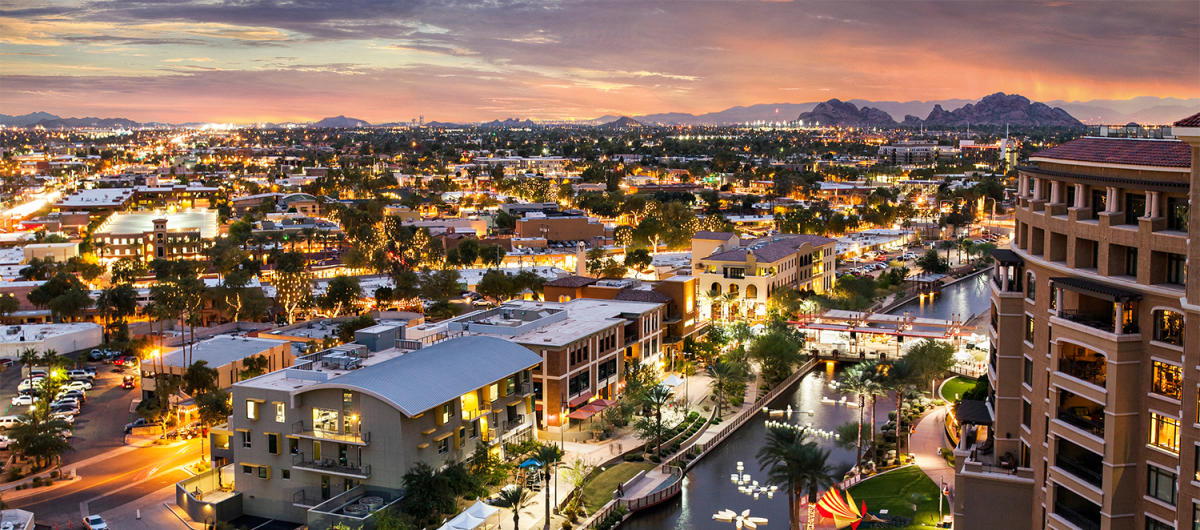
Name and Location: Old Town Scottsdale
History and Significance: Downtown Scottsdale’s historic Old Town district provides visitors walkable access to shops housed in early 20th century buildings alongside newer stores carrying apparel from local designers and Native artists. Galleries showcase fine art and dining options span the globe. Increased nightlife activity distinguishes OT from some neighboring Western towns.
What to Expect: Browse art, fashion, home decor and souvenir boutiques. Savor Mexican fare at lunch then return for fancy cocktail bar dining under twinkle lights at night. Thursday Artwalks highlight the district’s thriving creative community every week.
Visitor Information: Parking garages provide hourly to overnight rates. Free electric shuttle connects greater downtown area. Many restaurants/bars allow doggie dining on patios. Bars/clubs clustered in Entertainment District require age verification for entry.
Wander through blocks of charming boutiques, art galleries, souvenir stores, pubs and restaurants in downtown Scottsdale’s pedestrians-only Old Town district, perfect for close-up shopping and casual sightseeing. Many stores and artists set up uniquely-painted Airstream trailers as funky retail hubs along the lively stretch. Hop into pedicabs between stops to rest feet. Come nightfall, Old Town’s energy spikes even louder with clubs and cowboy dive bars catering to party crowds mingling streelside. From souvenir t-shirts to fine art, whiskey tasting rooms to cigar lounges, Old Town Scottsdale promises quirky finds and people watching at every turn. Don’t miss the Thursday Art Walk either, featuring live music alongside open galleries.
Pueblo Grande Museum
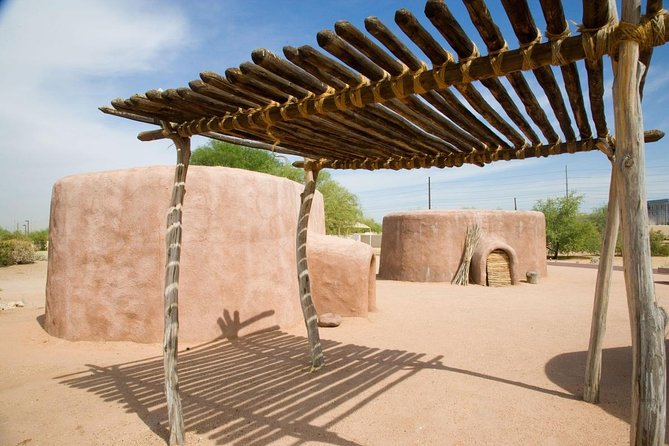
Name and Location: Pueblo Grande Museum
History and Significance: Phoenix’s only national historic archaeological landmark, Pueblo Grande Museum & Archaeological Park preserves remnants of a monumental canal system constructed by the ancient Hohokam inhabitants around A.D. 300, whose villages once dotted the entire Salt River Valley. Excavations first began on the site in the 1920s.
What to Expect: Outdoor trails with replica homes lead visitors past excavated foundations and ballcourts towards the central museum exhibition exploring Hohokam discoveries. Hands-on interactive stations demonstrate building methods and crafts like basketry and pottery. Video orientation provides an overview of these early ingenious desert dwellers.
Visitor Information: Located 15 minutes from downtown Phoenix near Sky Harbor International Airport. Open Mon-Sat 9am-4:45 pm. Nominal entry fee. Picnic ramadas on grounds with food and drinks prohibited in exhibit galleries.
Transport back across centuries touring the archaeological site turned museum at Pueblo Grande Museum and Archaeological Park near Sky Harbor Airport containing the ruins of a Native American settlement inhabited between 500-1450 CE preserved to detail indigenous irrigation technology informing modern practices today. Walk the well-marked interpretative trail explaining various remnants of holes and canals guiding ancient farmers towards previously unattainable agricultural success despite living within a desert climate. Handheld augmented reality devices overlay narrated animation on top of crumbling sites like the replicated Hohokam house too. For visitors seeking stories of enterprising innovation against challenging landscapes, Pueblo Grande’s glimpses into the past overturn assumptions of primitive lifestyles revealing advanced architecture and desert crop science.
El Chorro Trail
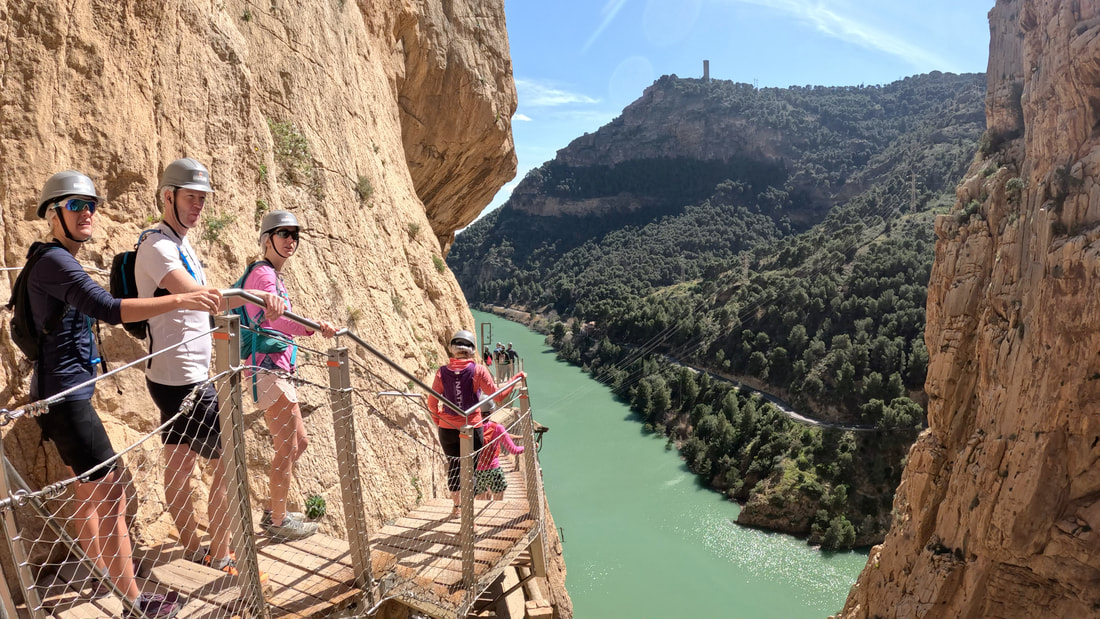
Name and Location: El Chorro Trail
History and Significance: Built along the remains of a 1920’s steam-powered railroad once operated by Phoenix founder Jack Swilling as part of an ill-fated desert tourism venture, today the level El Chorro recreation trail welcomes hikers, trail runners, mountain bikers and equestrians for scenic desert treks under the iconic Camelback Mountain.
What to Expect: The gently graded trail extends 3 miles one-way from downtown Camelback Inn to Cholla Lane trailhead in Paradise Valley. Multiple access points allow for shorter family-friendly routes perfect for wildlife viewing over typical Sonoran Desert vegetation. Early hours avoid intense afternoon heat.
Visitor Information: Free parking at Camelback Rd/Invergordon Rd intersection. Bring plenty water; park has no services. Pit toilets at Cholla Lane TH. Leashed dog walking permitted. Hunting prohibited. Mountain bike rentals available through Camelback Outfitters.
Stretching nearly 5 miles gaining over 1,300 feet between Camelback Mountain and Mummy Mountain lies the ruggedly scenic and surprisingly tranquil El Chorro Trail, perfect for an extended sunrise or sunset hike with phenomenal city views along ridge trails dotted with palms, ocotillo branches and creosote bushes. While the distance seems long, frequent elevation changes prevent any monotonous straightaways while keeping your heart rate up. Stop to catch your breath wherever a flat rock under shade appears then continue upwards through the natural desert playground until finally topping out upon central Phoenix looking like a distant mirage valley capped by the Mazatzal Mountains hovering along the horizon. Reward all the quad burn afterwards with burgers and beers around downtown.
Beyond famous resorts and golf links, Phoenix provides plenty of exhilarating adventures, cultural attractions and architectural wonders to fill any itinerary. World-class spas, vibrant urban districts, 80+ area golf courses, acclaimed dining and resort nightlife ensure visitors keep busy morning to nightfall. But make sure your Phoenix getaway also connects you to unique Sonoran desert landscape experiences showcasing what shapes this southwestern city beyond first impressions. Through sublime botanical gardens, fascinating Native American heritage, exhilarating desert hiking trails, and architectural landmarks respecting regional context, Phoenix proudly shares the best of Arizona alongside dynamic urban excitement. Come witness stunning sunsets over saguaro cacti outside an innovative culinary scene committed to local flavors. Phoenix offers the best of all worlds if you know where to look across its sprawling valley and our top 12 attractions get you started on an insider’s tour off the beaten path.

